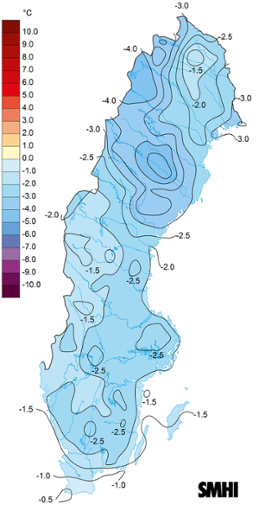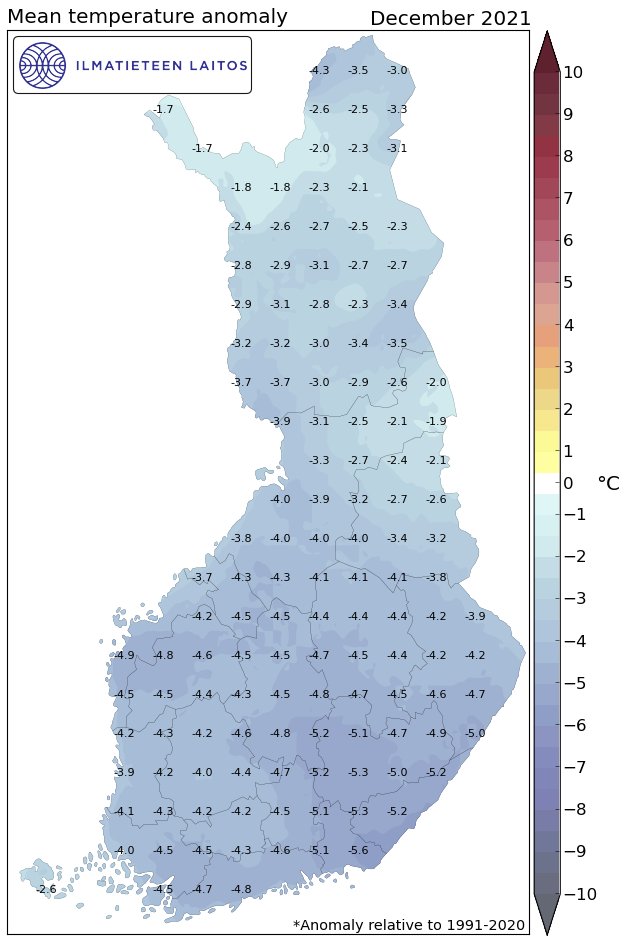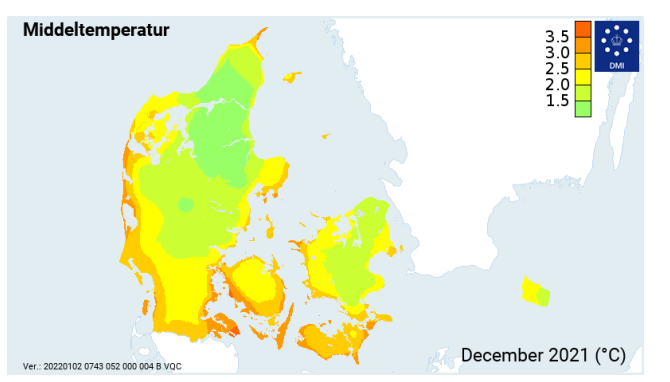
Record Snow Sweeps U.S.
Record-breaking snowstorms, riding down from an exceptionally cold Canada, have been snarling transport across the U.S., shuttering the federal government and bringing Washington to a standstill after almost a foot hit the city.
Many Americans have been scrambling to return home after the Christmas and New Year period, with thousands of flights cancelled due to the bad weather — even President Joe Biden was temporarily stranded on Air Force One after landing at Joint Base Andrews, near Washington, with deboarding delayed almost an hour so the tarmac could be plowed.
The unprecedented cold and snow hasn’t just been confined to the east, either; far from it, the majority of the U.S. has been impacted in recent days.
Mount Bachelor, Oregon has just set a record for ‘the most snowfall in a few days’, reports ktvz.com.
The mountain received almost 5 feet (58 inches) in the past 72 hours, including nearly a foot overnight, and “the winds continue to howl,” reads a statement released by the resort. Higher-elevation lifts have been closed, continues the statement; and parking lots also are reaching capacity due to the amount of snow piled up there.
“It’s really nice for actually being at the mountain, but I think my car is just completely stuck in the parking lot,” snowboarder Kian Knight said Wednesday.
Record snowfall is also hitting Idaho, reports idahonews.com, improving drought conditions throughout the state.
While at Snoqualmie Pass, WA, a 20-year snowfall record has been “shattered”, as reported by curiocity.com.
By Monday afternoon, the Washington State Department of Transportation had registered 236 inches of global warming goodness during the snowstorm, which was enough to 1) close the pass due to avalanche concerns, and 2) break the region’s snowfall record (for the time of year) — the 229 inches from Jan 3, 2006.
The Summit at Snoqualmie, located on the pass, is looking truly picturesque:
And for many, including Snoqualmie, there’s much more where that came from:

This is driving states’ snowpacks well-above the average.
Below is Oregon’s and Idaho’s mountain pack (as of Jan 4):
…Drives NH Snow Mass 450 Gigatons Above 1982-2012 Average
All this American powder is also having a positive impact on the Northern Hemisphere’s Total Snow Mass chart.
The latest data point (from Jan 4) shows at sizable jump in snow mass.
Totals are now approaching 2,500 Gigatons — or a whopping 400 Gigatons above the 1982-2012 average:

Also worth mentioning, Arctic Sea Ice has been on something of tear these past few months.
According to data from the National Snow & Ice Data Center (NSIDC), extent has not been this impressive since 2004–and it’s accelerating, too:

Furthermore, Greenland has seen an uptick of SMB in recent days, following a December hiatus…

…gains that will sustain the ice sheet’s ‘trend reversal‘ which began around 2012:
While at the bottom of the world, The South Pole just registered a record cold 2021:
Scandinavia Suffered Cold December With Arctic Air Confined To The North
Record cold invaded northern Europe last month, taking out a number of long-standing records; while, conversely, more central and southern regions enjoyed anomalous warmth — a phenomenon tied to the behavior of the jet stream, itself linked to activity on the Sun.
All of the Scandinavia nations suffered colder-than-average months of December: that’s Norway, Sweden, Finland, Denmark, and the oft forgotten Iceland and the Faroe Islands.
Diving into the data, courtesy of @Meteorologene, Norway registered an average monthly anomaly of -1.8C below the 1991-2020 norm — temperature anomalies fell as low as -5C below in parts of Finmark, while precipitation was down 25 percent.
Overall, it was Norway’s coldest, and driest, December since 2012.
December 2021 in Sweden was also very cold.
Temperature anomalies of between -4C and -0.5C below the 1991-2020 norm were noted:
Finland experienced a an exceptionally frigid December.
Temperature anomalies ranged from -1.7C (in the NW) to an astonishing -5.6C (in the SE) below the 1991-2020 average.
Data courtesy of @meteorologit:
And finally, Denmark had an average reading of -0.7C below the 1991-2020 baseline.
The below temperature map comes courtesy of our data-tampering friends at the DMI:
Eyeing back across the pond, an anomalous freeze is also continuing to prevail in Alaska and Canada:
Records for energy consumption continue to fall across The Great White North, and gas exports to the U.S. have been slashed due to the unprecedented domestic demand. Also, B.C. farmers are reported to be “white knuckling their way through the extreme cold”.
Shifting a little south, historic chill have also been noted on The San Juan Islands, an archipelago in the US state of Washington, where a record-busting 10F (-12.2F) was recently registered.
According to the San Juan Island National Park Service’s website: “Winter daytime temperatures are usually in the upper 30s to low to mid 40s, with nighttime temperatures slightly above freezing. Although the thermometer will drop below freezing, with subsequent hard frosts, it rarely falls below the mid to upper 20s.”
As reported by islandssounder.com, this week’s rare plunge –into almost single-digits(!)– has caused pipes to freeze in houses and buildings around the county that have never encountered the issue before. With damaged pipes, the leaks in systems county-wide are causing a large uptick in water usage. “Water levels in the water storage tanks in Town are dangerously low and the Town is therefore imposing an immediate water rationing order and may later need to initiate planned service outages to maintain service,” read a press release submitted by the Town of Friday Harbor. “The Town Water Plant is running at full capacity and is unable to keep up with the water loss we are experiencing.”
North America’s fierce cold, which was confined to the far north for much of the fall, broke out and descended south a few weeks ago. And looking at the latest weather models for Europe, a similar outbreak could be about to manifest there, too, as we approach mid-January — be careful what you wish for, Europeans, a mild start to winter means nothing…
Elsewhere
In Trinidad and Tobago, social media channels have been inundated with posts expressing shock at how cold it’s gotten.
There were widespread reports of record-challenging lows below 20C (68F)–and while that may not seem all that cold to most, in a country accustomed to sustained monthly averages of 26.5C (78.8F), locals had no shame in urging others to bundle up and stay warm.
The Trinidad and Tobago Weather Center confirmed in statement that several areas in central and south Trinidad did indeed register temps below 20C (68F): “The coolest temperature recorded via a calibrated thermometer was in Penal at 17.63C (63.7F), while a thermometer (uncalibrated) recorded a minimum low of 15C (59F) in Lengua, Barrackpore.”
Note, the coldest temperature ever registered in Piarco (Trinidad’s official climate reference site) is the 16.1C (61F), logged on the nights of Jan 21 and Jan 30, 1964 (solar minimum of cycle 19).
The COLD TIMES are returning, the mid-latitudes are REFREEZING in line with historically low solar activity, cloud-nucleating Cosmic Rays, and a meridional jet stream flow (among many other forcings, including the impending release of the Beaufort Gyre).
Prepare accordingly — learn the facts, relocate if need be and grow your own.
Social Media channels are restricting Electroverse’s reach: Twitter are purging followers while Facebook are labeling posts as “false” and have slapped-on crippling page restrictions. And most recently, the CCDH has stripped the website of its advertising.
So, be sure to subscribe to receive new post notifications by email. And also consider becoming a Patron or donating via Paypal (buttons located in the sidebar >>> or scroll down if on mobile). The site receives ZERO funding, and never has.
So, any way you can, help me spread the message so others can survive and thrive in the coming times.
The post Record Snow Sweeps U.S., Drives Northern Hemisphere Snow Mass 450 Gigatons Above 1982-2012 Average; + Scandinavia Suffered Cold December As Arctic Air Was Confined To The North appeared first on Electroverse.
via Electroverse







You must be logged in to post a comment.